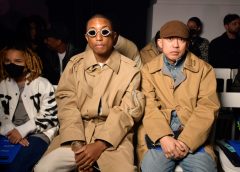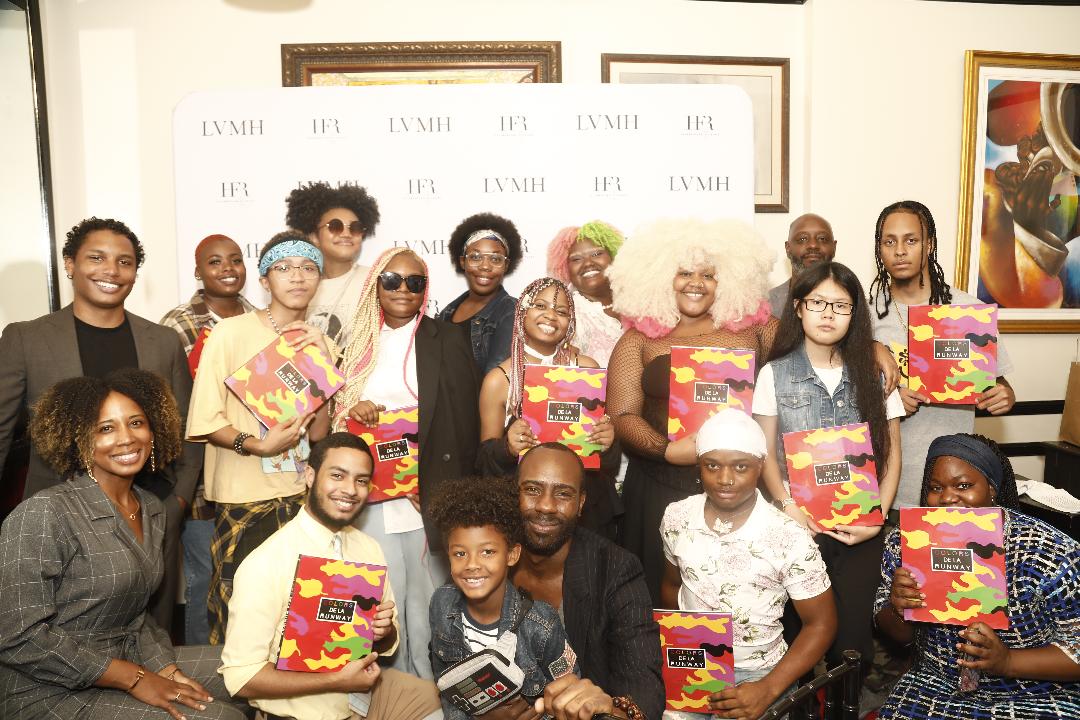
Fashion Designers With ‘Influence’ Are in Hot Demand – WWD
[ad_1]
Virgil Abloh broke the mold in terms of the skill set a creative director can — and should — possess.
The late designer, the mastermind behind the Off-White brand and Louis Vuitton’s explosive menswear business, has become a leading role model for fashion students with his multidisciplinary, inclusive and community-minded approach to fashion, according to Valérie Berdah-Levy, director of Istituto Marangoni’s Paris school.
Equally popular is Japanese streetwear pioneer Nigo, now the creative director of Kenzo. Berdah-Levy explained that he is a multihyphenate with tentacles that stretch into music production, industrial or graphic design and DJing, like Abloh did as well.
“Students love multicreative minds and talents who are not only fashion designers but have many passions,” she said.
Ditto for recruitment specialists: Headhunters say fashion houses are increasingly searching for creative leaders who have the attention of the internet, an enviable creative network, and the ability to inspire a community.
They stress that formidable design chops and industry buzz remain important attributes for attaining the top jobs in fashion. And they note that second-in-command designers frequently have the inside track, as the recent appointment of Matthieu Blazy to succeed Daniel Lee at Bottega Veneta attests.
But there’s no doubt that influence and cultural connections are increasingly important attributes in fashion.
Consider, for example, artist Daniel Arsham, who recently launched his own clothing and accessories brand Objects IV Life, after several collaborations with Kim Jones at Dior. He boasts 1.3 million followers on Instagram.
According to Floriane de Saint Pierre, founder and principal of Floriane de Saint Pierre & Associés, brands today must be influential on social media to lead the game.
“With social networks, and the acceleration of their use due to COVID[-19] lockdowns and traveling restrictions, we are more than ever living in the attention economy, where attention has become a scarce commodity, hence has a value,” she explained in an interview. “Without attention, brands cannot create any desire, and consequently not sell either dreams or products.”
De Saint Pierre noted that creative directors today can possess a variety of skill sets in order to engage consumers.
In her view, they can come from a more classic fashion background and education — such as Phoebe Philo, Demna at Balenciaga, or Maximilian Davis, recently appointed at Salvatore Ferragamo — or they can come from other creative fields.
Examples of largely self-taught fashion entrepreneurs include Nigo, a record producer and DJ who created the A Bathing Ape and Human Made brands before joining Kenzo; Teddy Santis, who parlayed his love of New York’s ’90s hip-hop scene and pick-up basketball culture into the fast-growing Aimé Leon Dore brand, and Tremaine Emory, who is prized for his storytelling and who traversed several industries before founding Denim Tears, and taking on a creative role at Supreme.
De Saint Pierre calls them all “catalysts of an aspirational society” and leaders of inspirational brands whose clients “feel part of a community of values they want to belong to.”
“Needless to say, the product has to stand for such values, and the minute it becomes too obvious or too banal, the influential community moves to other brands,” she added.
To be sure, plenty of acclaimed and famous fashion designers over the last 50 years have been largely self-taught, including Karl Lagerfeld, Miuccia Prada, Vivienne Westwood and Manolo Blahnik, or came from other fields such as architecture, studied by the likes of Pierre Cardin and Gianfranco Ferré.
But the advent of social media changed the dynamics of the industry, letting creative people interact directly with their audiences, rather than via gatekeepers such as editors and retailers. At the same time, the purpose, values and messages behind brands have become important qualities alongside aesthetics and design.
Abloh also famously trained as an architect, and Off-White chose Ibrahim Kamara, a stylist and editor, as his de facto successor.

Ibrahim Kamara
Courtesy Photo
Editor in chief of Dazed magazine, Kamara was part of the Off-White family for years, styling the shows of the brand. Before taking on the top job at Dazed, he produced editorials for the likes of i-D, System, Vogue Italia and Another magazine, gaining attention for rich visual storytelling that weaves high fashion with diverse cultural references and questions on gender and identity.
Kamara has 246,000 followers on Instagram.
Celebrity entourages can’t be discounted either.
Nigo’s debut show for Kenzo last January helped the brand win $6.6 million in media impact value, and crack the top three most impactful shows during Paris Fashion Week, after Louis Vuitton in first place and Dior second, according to tabulations by Launchmetrics. “The show’s star-studded front row brought immense media buzz, with various hip-hop artists such as Kanye West, Pharrell Williams and Tyler the Creator being mentioned in more than 50 percent of placements related to the brand,” the data and insights firm noted.
Emma Davidson, managing director of London search firm Denza Limited, said her clients have been demanding influence — or even influencers — for creative searches.
“I have had this specifically from a huge Italian luxury house: ‘We want someone like Olivier Rousteing. Not his work but his profile — on Instagram, photos with all the hot girls, always buzzy, at the right parties. We want hype.’ This was about eight years ago,” Davidson related, referring to Balmain’s creative director, who boasts 8.3 million followers on Instagram and 737,000 on TikTok. “Since then it has only escalated with the prevalence of various apps which have become connectors between brand and audience.”
Davidson cited a slew of ancillary considerations that have made creative recruitments increasingly complicated.
“There are so many things — minority representations in the industry, sustainability, brand/DNA of the designer, the designer’s background, including any bad press issues, budget available, ‘does the story work,’ what celebrity friendships are advantageous, fashion-group politics,” she enumerated.
She noted that candidates with a “strong creative network ripe for collaborations” are also attractive.
Davidson also made a case for internal promotion, applauding Blazy’s at Bottega Veneta as one example. Virginie Viard’s ascension at Chanel following the 2019 death of Karl Lagerfeld would be another prominent case, as is Alessandro Michele’s rise to fame from within Gucci’s design studios.

Matthew Blazy
Willy Vanderperre/Courtesy of Bottega Veneta
“This is called sustainable recruitment. There should be more of it in business planning,” she said. “Companies invest so much time and money into people. Payroll is a huge expense and should be treated like gold. These people have specialist knowledge, understanding of a DNA. They should be hired wisely, trained up within a company, build in staff retention planning,” she said. “I am very, very pro investment in people.”
De Saint Pierre argued there is no single recipe to succeed in fashion today.
“To become — or to remain — influential, we are probably witnessing two parallel models. On the one hand, there are steady and long-term burners with clients extremely loyal to the brand and to the product in itself,” she said, mentioning Hermès and The Row as two examples. “And on the other hand, there are brands that need to reposition as influential brands. In such case, creative directors — whether they are known or unknown — are the catalyst and the voice of today’s society….Their role is to visually express the brand at the heart of today’s society and its values.”
Fashion schools have evolved curriculum to reflect the changing profile of creative directors, with influence and sharp communication skills among new elements. For example, at Istituto Marangoni in Paris, second-year students are tasked with creating and fielding a professional Instagram profile.
“They need to learn how to present and communicate their concept and creation, and how to catch attention with their collection,” Berdah-Levy explained. “They can experiment with the communication potential of the metaverse, gaming — and we try to make them work with students from other programs, like business and fashion styling, so they develop additional skills.
“We push these interdisciplinary projects so they are not only design-centric,” she added.
Berdah-Levy stressed that design skills remain paramount, and clothes must be “exciting and desirable” enough to excite celebrities and influencers while also remaining “client-oriented.”
Yet today’s creative directors can’t operate in an ivory tower. “The designer needs to be visible, present, accessible, have a global vision and knowledge of all the factors a collection needs to succeed. But the designer is also an influencer,” she said.

Lena Situations
Stéphane Feugère/WWD
To wit: Istituto Marangoni has invited the likes of Louise Parent; Géraldine Boublil aka Erin Off-Duty; Loulou De Saison, and Léna Mahfouf, better known as Léna Situations, to explain how they have built a following and a business in the fashion field. “I like that they say to the students at the beginning that it’s a real job, that they work hard to get this level of recognition and authority,” Berdah-Levy said.
Besides Abloh and Nigo, Marine Serre, Balmain’s Rousteing and Simon Porte Jacquemus — the latter with 4.9 million followers on Instagram — are also much loved by students, with Rick Owens a dark-horse favorite, seen as an outsider with a strong fashion identity.
“They like the idea that a fashion designer may have different passions and be creative in fields other than fashion,” she said. “And they like to project themselves onto these kinds of personalities and people.”
[ad_2]
Source link


